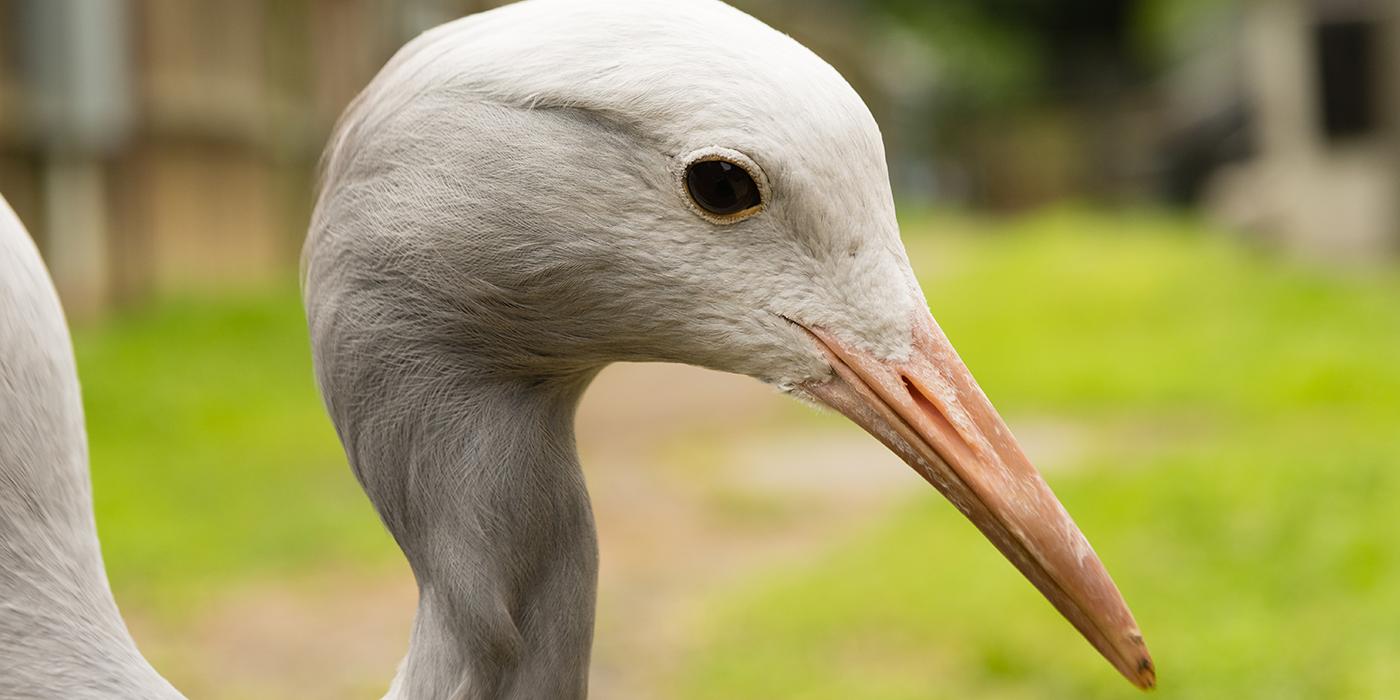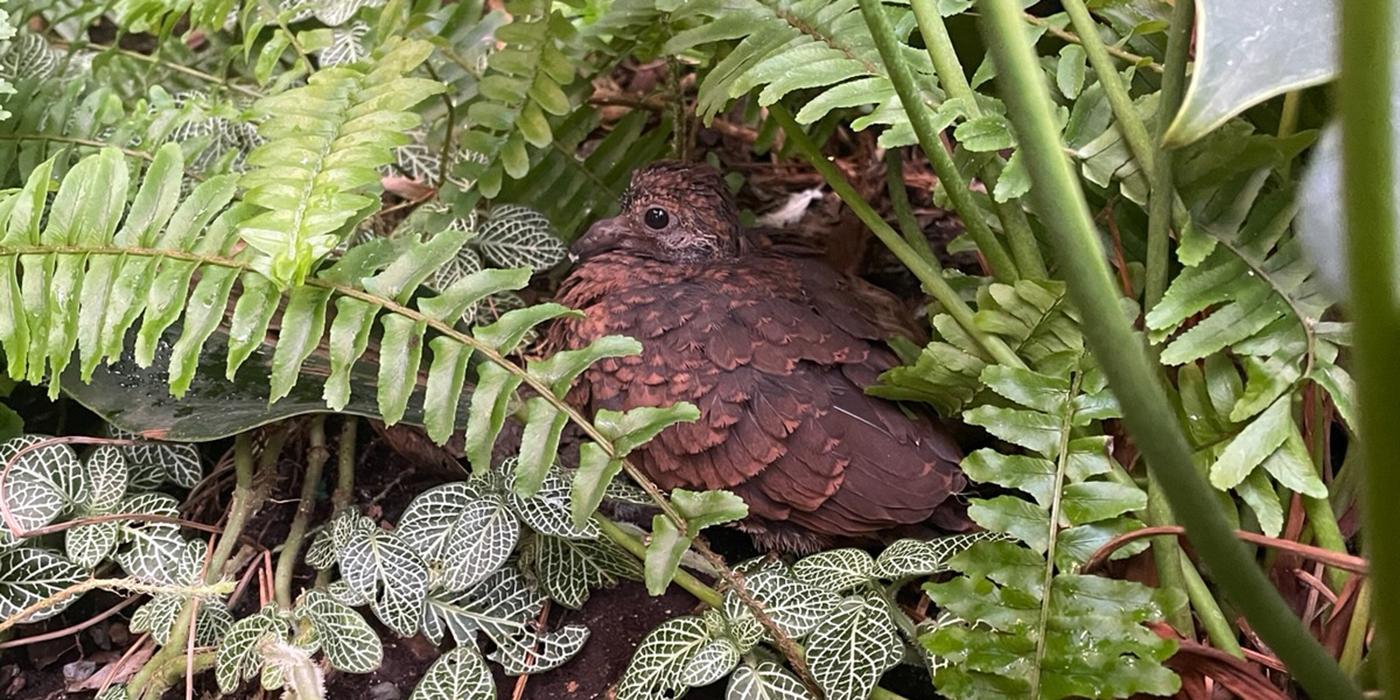Featured Creature: Alice the Stanley Crane
Alice, our 5.5-year-old Stanley crane, is unlike any other bird. To understand what makes her such a remarkable animal, we have to go back to the beginning of her story.
In July 2014, her parents were incubating two eggs. The first egg that hatched was Alice’s sibling, and their parents devoted all of their time and attention to that chick. Historically, their second egg had been infertile, so we decided to pull it from the nest. However, when I went to pick up the egg, I could hear a chick vocalizing inside! We placed it in an incubator near the keeper office. The following day, July 7, this beautiful little bird pipped her way out of her shell. We extended the opportunity to name her to one of our generous donors, who chose the name "Alice" in honor of her mother. She, too, fell in love with Alice, and has contributed to her care ever since.
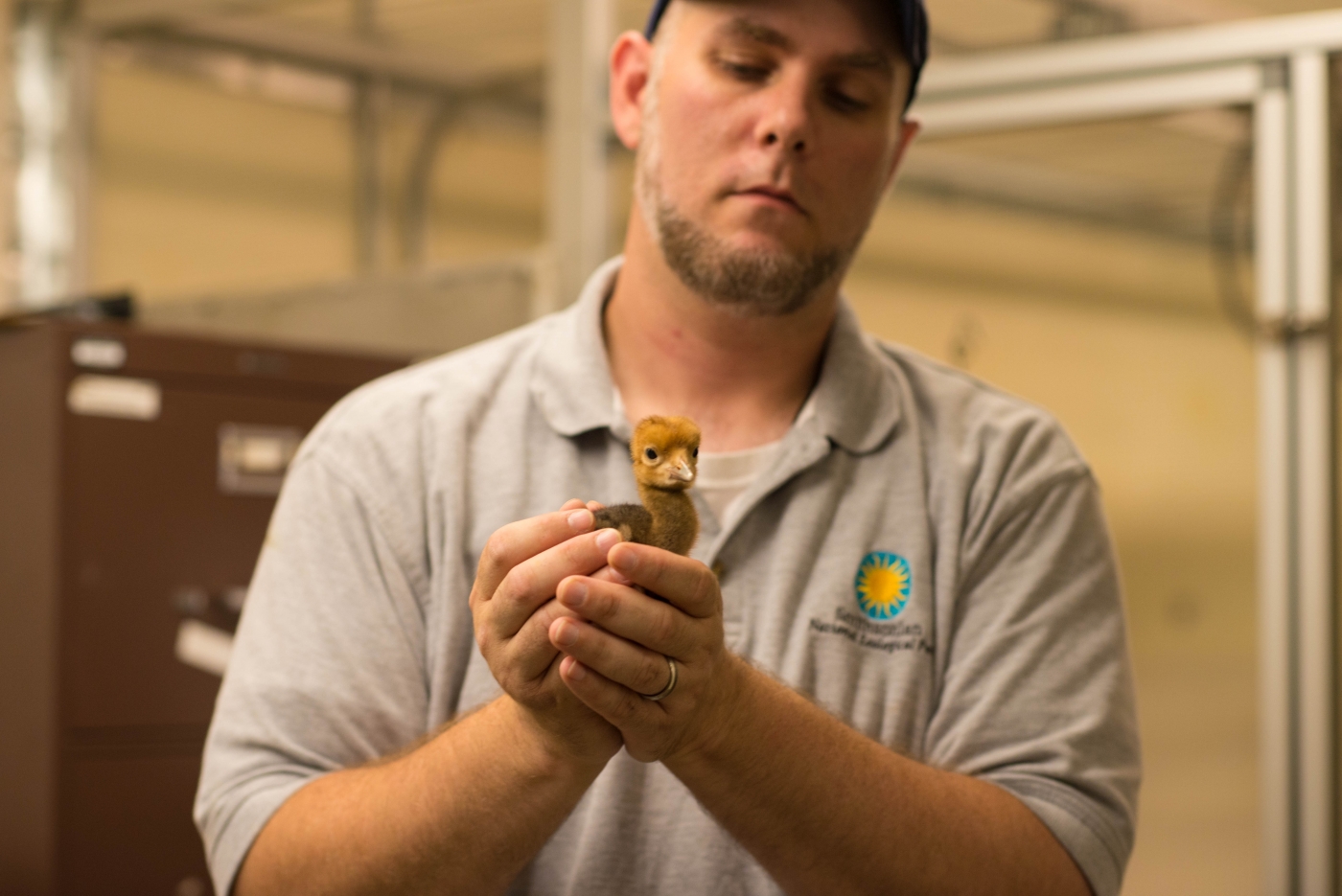
Alice’s parents would have rejected her if we put her in the enclosure with them. Hand-raising her was our only option. Alice imprinted—or socially bonded—with her keepers, spending all of her time with us and two flamingo chicks who were also being hand-raised at the time. Because of this, Alice is used to sharing space with people and seems to enjoy our presence.
Her affinity towards people made her the perfect ambassador bird. Over the years, her meet-and-greet demonstrations became a favorite among Zoo visitors. And, from the studies we have done to evaluate her stress (cortisol) levels, it appears she enjoyed them just as much!
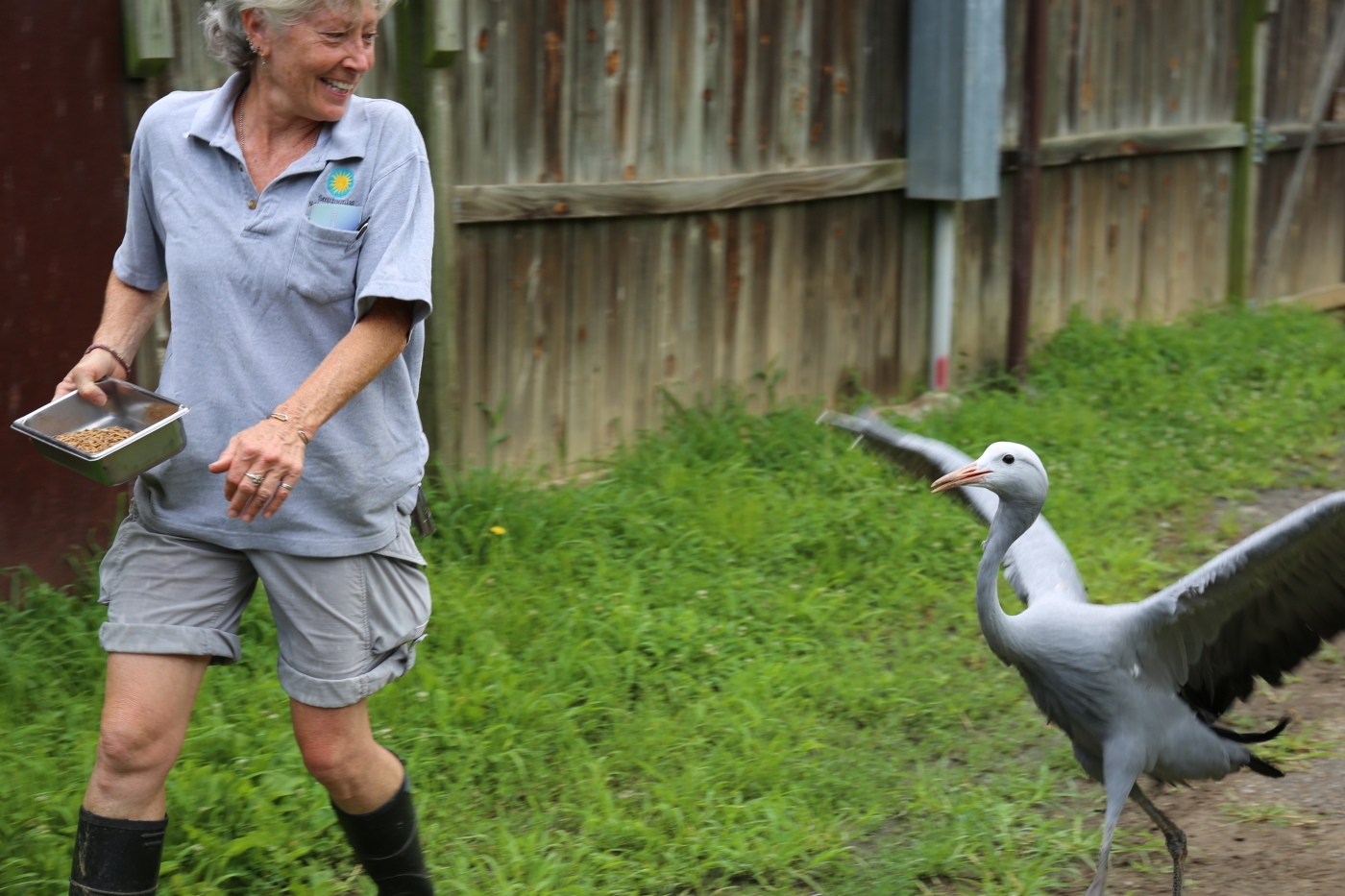
From the get-go, Alice has been an upbeat, enthusiastic and even-tempered girl. I’ve never known a day that she wasn’t—which made June 20, 2019 just another day, until I noticed something odd.
That warm summer day, I entered Alice’s yard to spend time socializing with her. She was in her pool, splashing around and being her normal, happy self. As I bent down to make some waves in the water, I noticed that her left hock (ankle) looked swollen. It did not seem to bother her at all. Typically, when birds are in pain, they may reduce their movements, stop eating or isolate themselves. None of this was the case with Alice. She explored her habitat and bathed normally, ate as heartily as ever and consistently greeted her keepers by “dancing”—jumping up and flapping her wings—whenever we came to take care of her.
Still, the swelling concerned me. I called our veterinarians, who brought Alice to the veterinary hospital to assess her and take some radiographs. The good news was she did not have a broken bone or tumor in her leg. The bad news was she did have some swelling and fluid surrounding her soft tissue. The veterinarians administered fluids, pain medications and antibiotics and told us to keep a close eye on Alice.
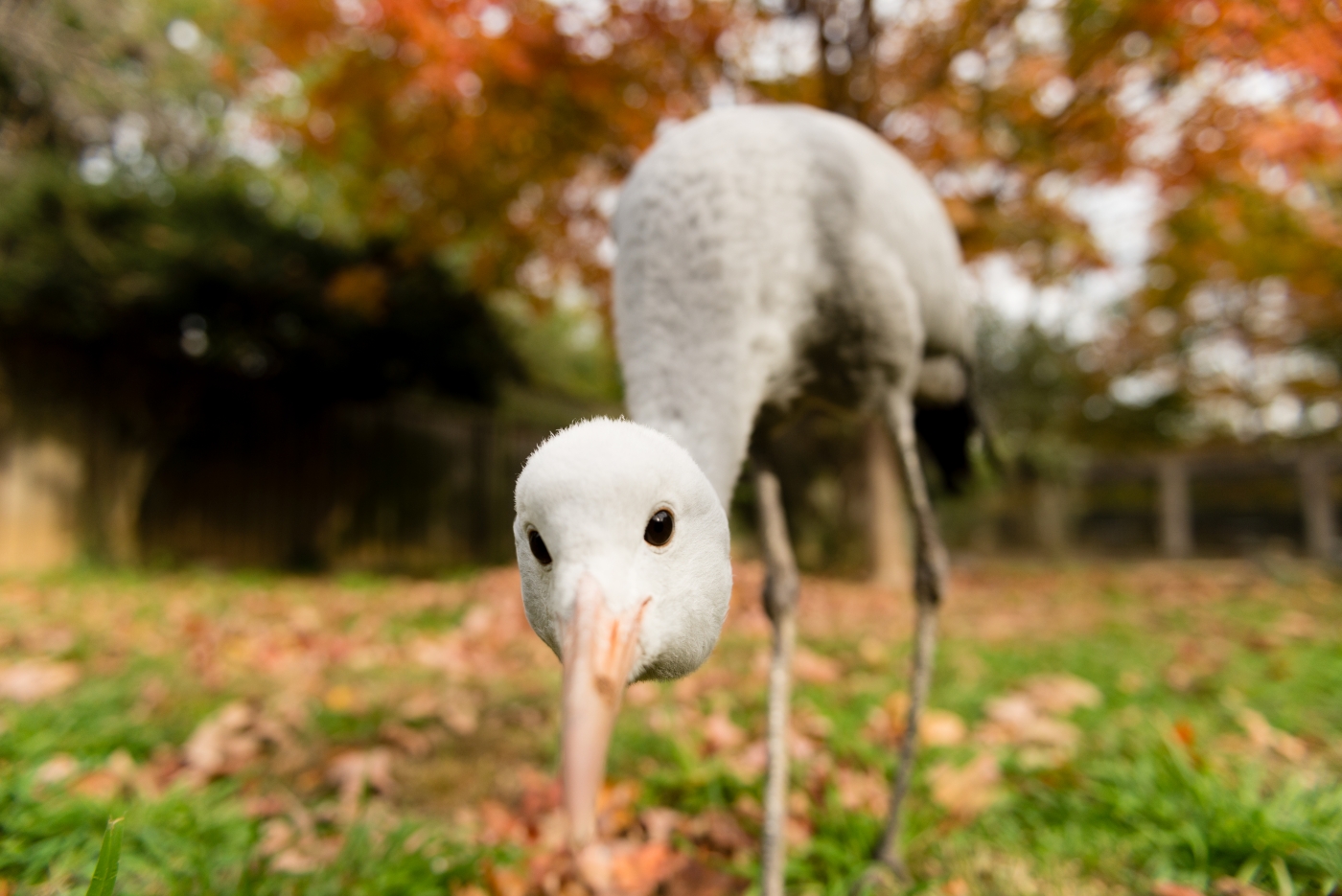
Initially, the swelling went down. By July 12, Alice appeared to be favoring her left leg and we began to see an increase in her hock swelling and leg bowing. The bow was nothing new—she has had a splay in her left leg since she was young. On this particular day, the bend was more prominent. While we cannot say what definitively caused the swelling in her hock, it is possible that her leg bow predisposed her to this injury. She is so exuberant during her dances, it is also possible she landed the wrong way, exacerbating her condition.
Subsequent radiographs did not reveal anything new, but our veterinary team suspected that Alice had sustained some lateral ligament damage. However, given risks associated with anesthesia and surgery in long-legged birds, we elected to repair the damaged ligament with non-invasive methods first.
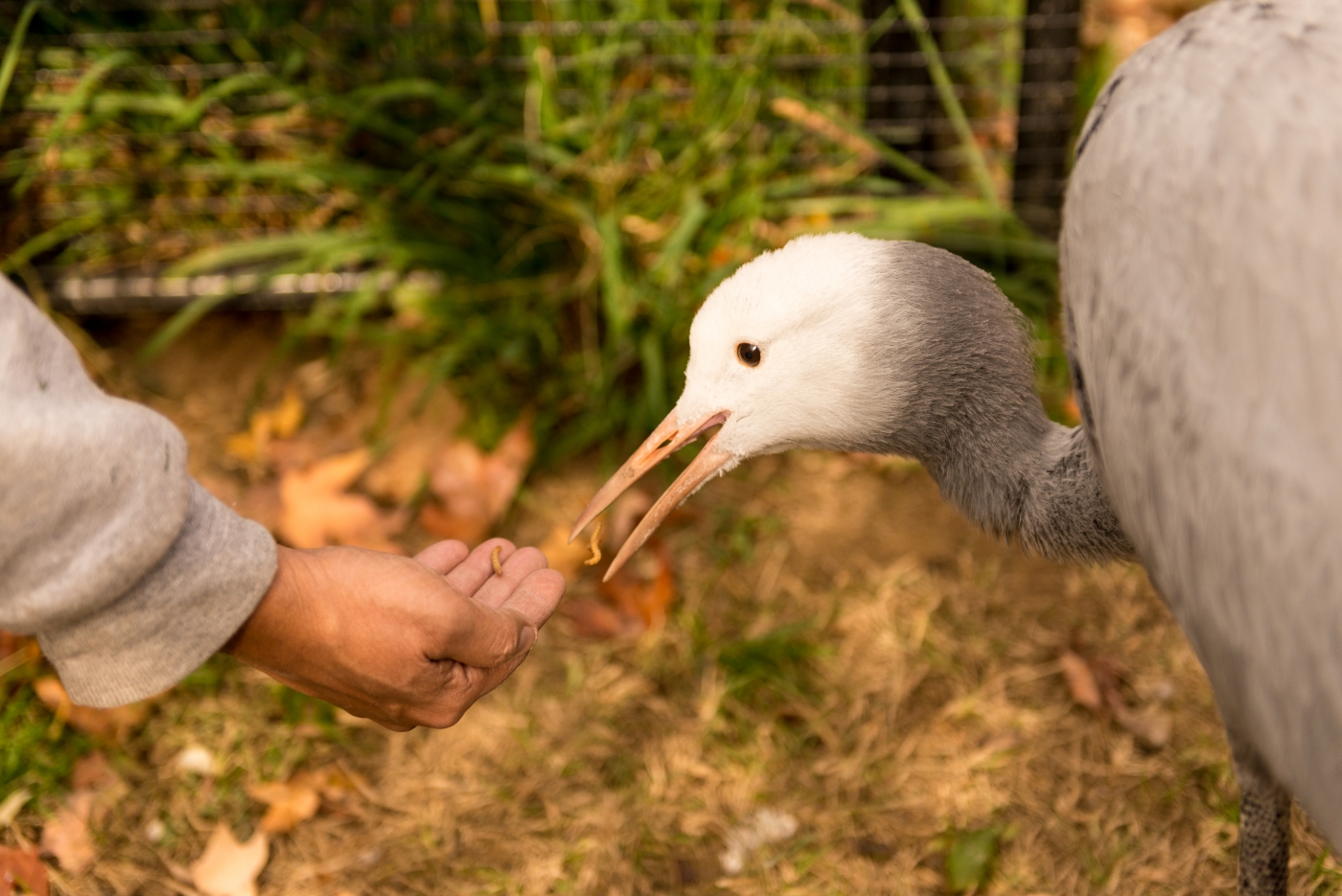
To help stabilize her leg, vets placed a soft-support wrap around her hock. The gauze didn’t seem to bother Alice. Rather, she turned it into enrichment, picking at the wrap and tearing it to shreds. She had great fun in the process! We changed the wraps every three or four days, or until she tore them off—whichever came first. In between wrappings, our veterinary technicians would perform deep-tissue laser therapy, massaging her hock with the probe. Alice was a trooper through both of these procedures and took everything in stride.
On July 24, we brought Alice to Friendship Hospital for Animals, a veterinary specialty hospital, to get a better look at the condition of her leg. A CT scan and ultrasound confirmed what the Zoo’s vet team suspected—Alice had damaged the lateral collateral ligament in her left hock. Following consultation with an outside surgeon, we agreed to work with a company to create an orthotic leg brace for Alice to stabilize the joint.
When it came time to fit Alice for a brace, she stood still and was well-behaved throughout the entire experience. She allowed us to gently hold her in place as veterinarians placed the plaster cast on her leg. To try to do this with any other bird—and a crane, especially—would be extremely difficult, if not impossible. Most cranes are quite aggressive, but Alice tolerated all of her treatments remarkably well! Her calm disposition and trust in us was key to allowing vets to perform these treatments.
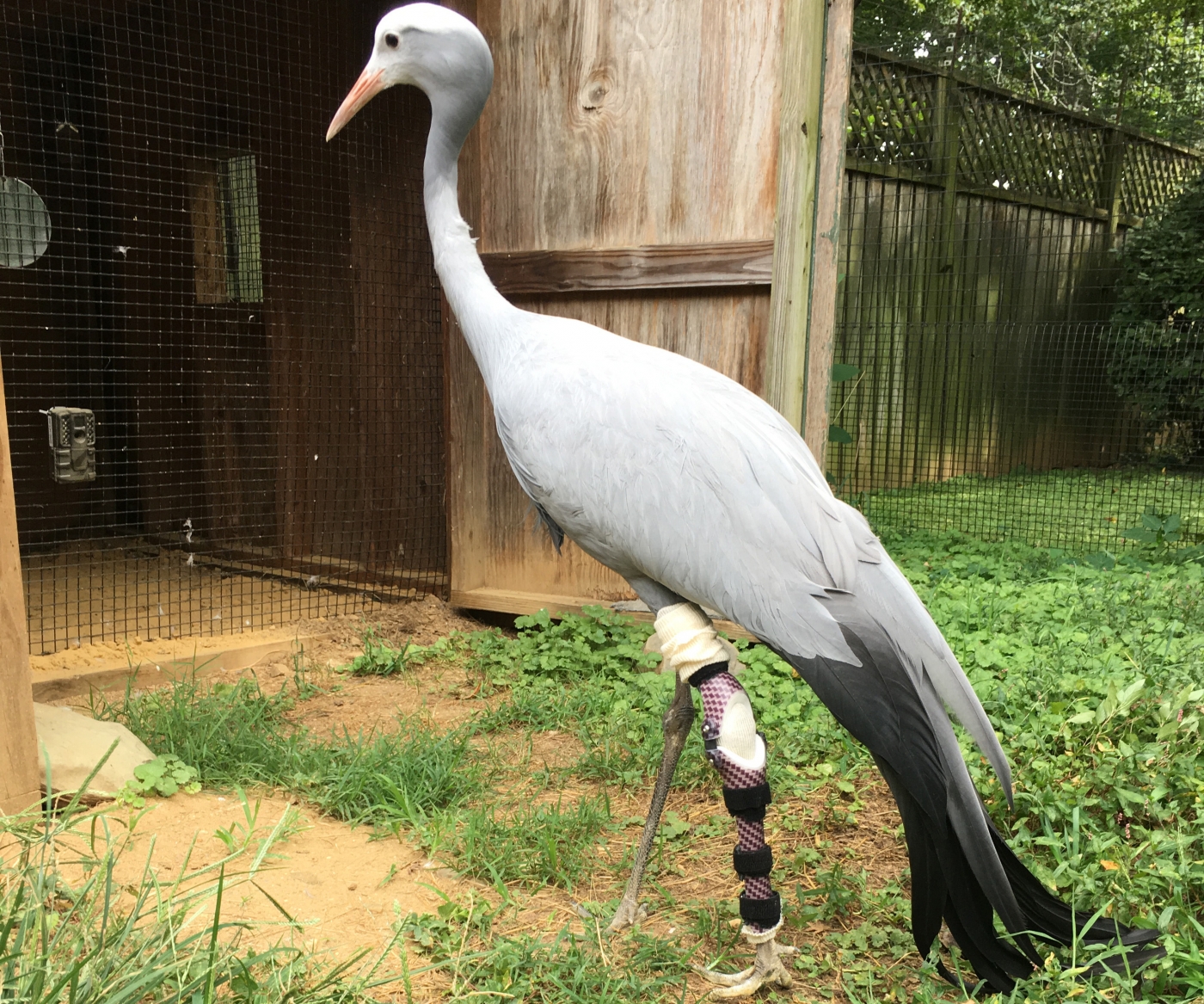
On Aug. 10, Alice’s new brace was finished. Although she wore it for about a week, it was clear that the brace was making her uncomfortable and did not provide the stability we had hoped. That left us with no choice. We had to do surgery.
Alice underwent surgery Aug. 28 for internal brace ligament augmentation. The surgeons placed an internal brace suture tape inside the joint to create an artificial lateral ligament. Alice is truly a pioneer for her species, as this is the first time this procedure has been performed in Stanley cranes! Pins were then placed in the bone to further stabilize the joint as it healed. The procedure went smoothly, and Alice remained at the Zoo’s veterinary hospital to recover.
Because the surgeons recommended restricting her activity for months post-surgery, one of the most challenging aspects of caring for Alice was thinking of ways to keep her enriched. While Alice continued to receive visits and interactions from Bird House keepers, veterinarians, veterinary technicians and hospital keepers on a regular basis, there were other animals to care for as well. To provide additional visual and auditory stimulation, we brought her a DVD player, thinking that if she could watch people talking and dancing, it would keep her entertained and provide some “virtual” socialization.
Animal care staff from the hospital and all over the Zoo donated DVDs for Alice. The first movie she watched was "Chicago." Alice is naturally attracted to glitz and shiny objects, so I thought the sparkly costumes plus the dancing would resonate with her. Throughout the movie, she cocked her head and watched it intently. There’s no way for us to interpret what she thought, but it was clear she was hooked!
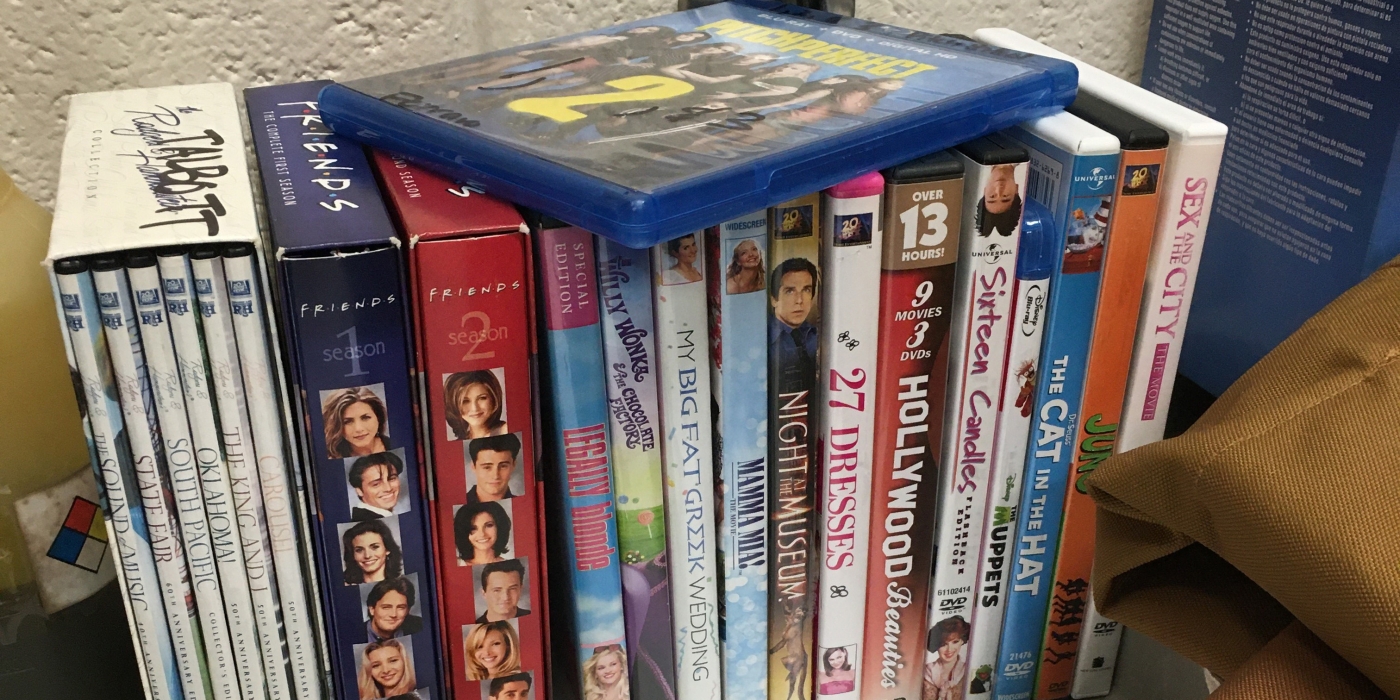
"Mama Mia," "Legally Blonde," "The Birdcage," "My Big Fat Greek Wedding" and episodes of "Friends" were all in heavy rotation, but by far her favorite was "The Sound of Music." When Julie Andrews appeared on the iconic hillside and started singing, Alice would walk up the screen and peck at it. To me, that was a sure sign she enjoyed it. Of course, she received her usual toys—kongs, mirrors, a xylophone and puzzle feeders—but the DVDs were a great resource for keeping her entertained while ensuring she did not overexert herself.
On Nov. 20, 12 weeks post-surgery, Alice’s pins were removed. She remained at the hospital under close observation for the next several weeks to ensure she was moving, eating and behaving normally, and to allow the joint ligaments to strengthen further.
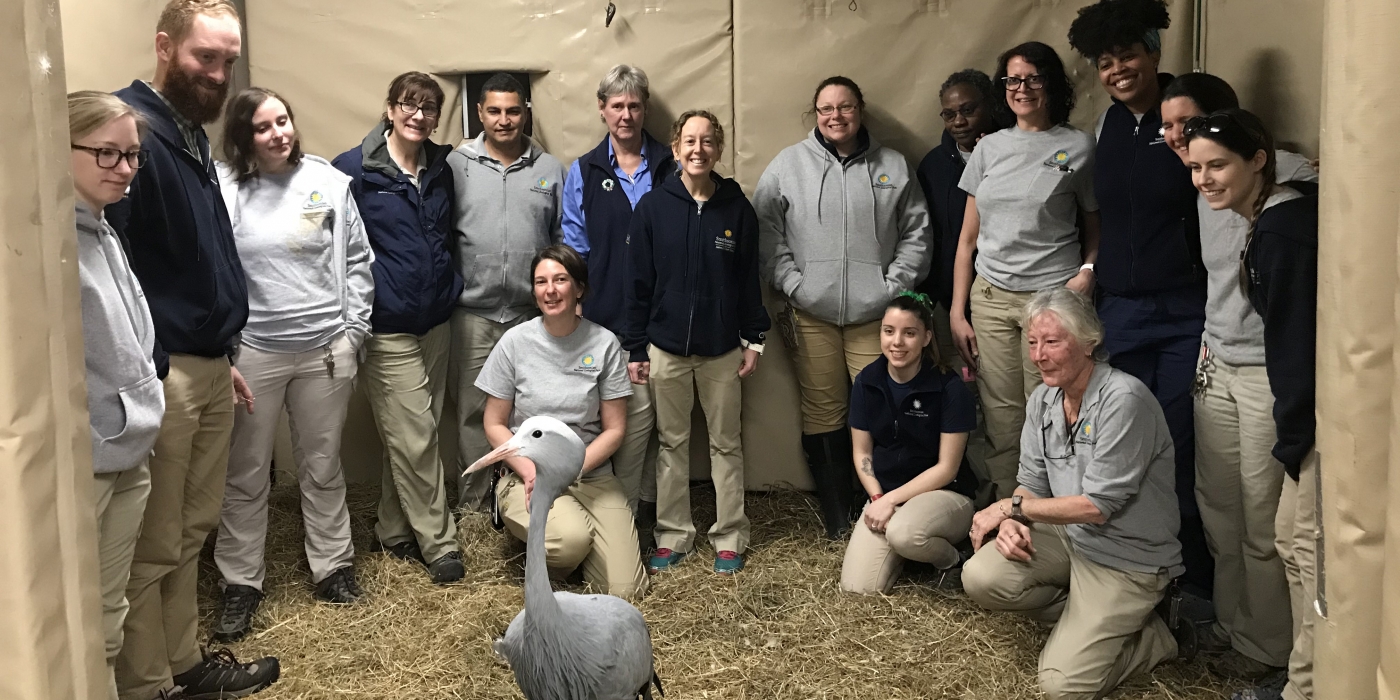
When she finally returned to the Bird House Dec. 23, we threw a big celebration for her homecoming. I made a “cake” especially for Alice. The “batter” was a mixture of crane pellets and water. I topped the cake with crickets—one of Alice’s favorite foods—arranging them so they spelled out her name. When the whole team surprised Alice with her special treat, she was so excited she started jumping up and down. It was joyous!
Today, Alice walks with a bit of a limp, but she continues to bear weight on her left leg. Although she will likely always have some instability in that joint, the artificial ligament is strong and should last her the rest of her life. Stanley cranes can live to be 40 or 50 years of age, so we could see the benefits of this procedure for decades to come. Every morning, she greets us by enthusiastically jumping up and down, and her disposition is as sweet and charming as ever.
As much work as our team put into Alice’s treatment and recovery, there’s no doubt what made this entire process truly successful was Alice. She deserves much of the credit for being an exemplary patient. She placed her trust in us completely, and worked with us every step of the way.

It’s been wonderful having Alice back home at the Bird House, and she has even made some new friends. While the building undergoes renovations, Alice’s yard on the perimeter of the building remains intact. When the weather is nice, I join her in the yard for a walk outside, and we watch the construction vehicles and workers as they pass by.
When the Bird House reopens in early 2022, I hope you will take some time to meet Alice in person and become a part of the next chapter of this amazing ambassador bird’s story!
This story appears in the March 2020 issue of National Zoo News. While the Bird House is undergoing renovations, don’t miss feathered friends at Amazonia, American Trail, Cheetah Conservation Station, Kids’ Farm and Small Mammal House. Check out the schedule of animal encounters to help plan your next visit to the Zoo!
UPDATE Dec. 21, 2020: Please note that the Zoo is temporarily closed as a public health precaution to help prevent the spread of COVID-19.
Related Species:

